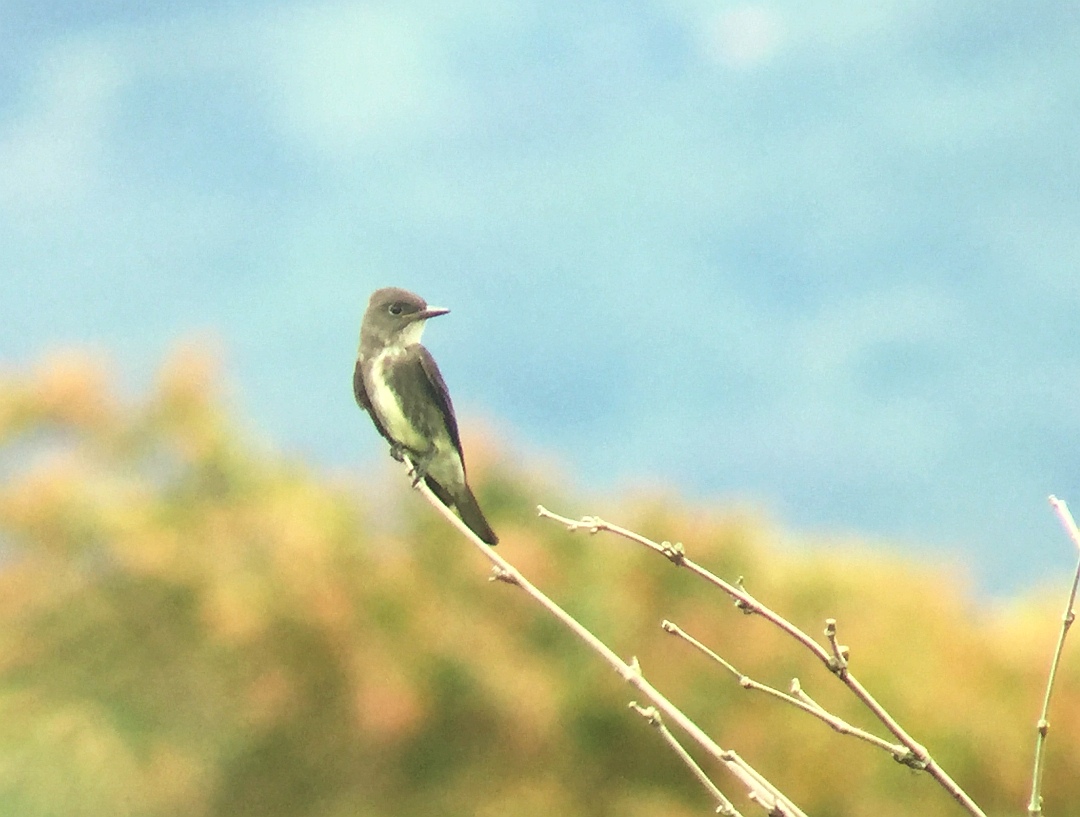In birding lingo, sandpipers, plovers, and similar birds are often collectively referred to as “shorebirds” or “waders”. This is because most are indeed found in coastal habitats and many also spend a good amount of their time wading into shallow water. But, since life has a tendency to evolve to utilize every possible niche, we also have shorebirds that aren’t always found near the shore, waders that don’t necessarily wade.
Since many sandpiper and plover species breed in high Arctic places where the vegetation is brief, it makes evolutionary sense that some members of those avian families also occur in grassland habitats. For species such as the Long-billed Curlew, their presence on prairies is limited to the summer months when they roam grasslands under wide open, western skies. Once they fly south, this big sandpiper uses its extra long beak to probe deep into the mud of tidal flats.

Other species leave the tundra to migrate to coastal habitats and other wetlands, but some sandpipers and plovers prefer the dry, open spots. The grass can’t be too high because then, they wouldn’t see a fox creeping up on them, might miss a spying a snake or other predator that could course just over the grass and catch them by surprise. This is likely partly why we see Upland and Buff-breasted Sandpipers in open areas with short grass, the fact that they are adapted to such habitats is also why these particular sandpipers are known as “grasspipers”.
As one might expect from a country where tropical forest is the historic and expected natural way of things, Costa Rica isn’t the best place to see grasspipers. But, that doesn’t keep such birds from migrating through these lands. This small birdy nation is still situated on their migration route and given the right circumstances, Buff-breasteds, Uplands, and the American Golden “Grassplover” will touch-down on Costa Rican soil.
Most individuals likely do so in the open cattle fields of Guanacaste and other similar areas and that’s probably partly why we rarely see these incredible long distance migrants. They’ve got too many places where they can stop, much of it is inaccessible, and we would need an army of birders to marginally check the spots that we could access. These factors are why most local birders check the airport and eBird to see if any grasspipers are around. At least that’s what I do. The airport check gets tiresome but you gotta do it; you just never know when the birds will show.

EBird is much easier to check and thanks to that modern day birding platform, myself and other local birders were able to connect with this years’s batch of grasspipers. First found on September 23, at least a dozen Buff-breasted Sandpipers and a few Upland Sandpipers have been frequenting the large, open meadows of the airport. It’s not the quietest place for birding, nor the most comfortable, but that’s where the grasspipers are, that’s the patch of welcome grass that they noticed while flying high over the Central Valley.
I imagine that to them, it would be an oasis in a landscape of human canyons, false asphalt rivers, and useless (to those birds) woodlands that follow the twists and turns of creeks and rivers. The masters of flight would start to descend for a closer look and then seeing that the green patch was indeed a place they could use, maybe find food, they would fly down to land.
It could have been the need for a break or maybe the need to feed that brought them to the fields of the Juan Santamaria airport but I can’t help but wonder if it was one of the typical afternoon storms that forced them to land. The previous day and night was replete with heavy rains, those birds could have been flying along and realized that it wasn’t such a good idea to keep on moving in such unstable, energy-draining flying conditions. There was that patch of grass green down below and it beckoned with the hope of temporary salvation.
Whatever the reason for the visit, myself and many other local birders were pleased that the grasspipers came down to land and feed where they did. They have been here for a few days now, I hope that they can get enough food to head back into the skies, get their bearings, and keep rocketing their way south.
























